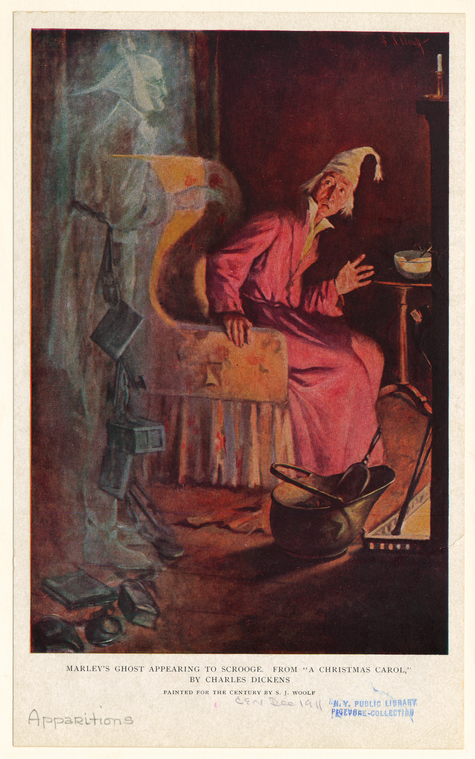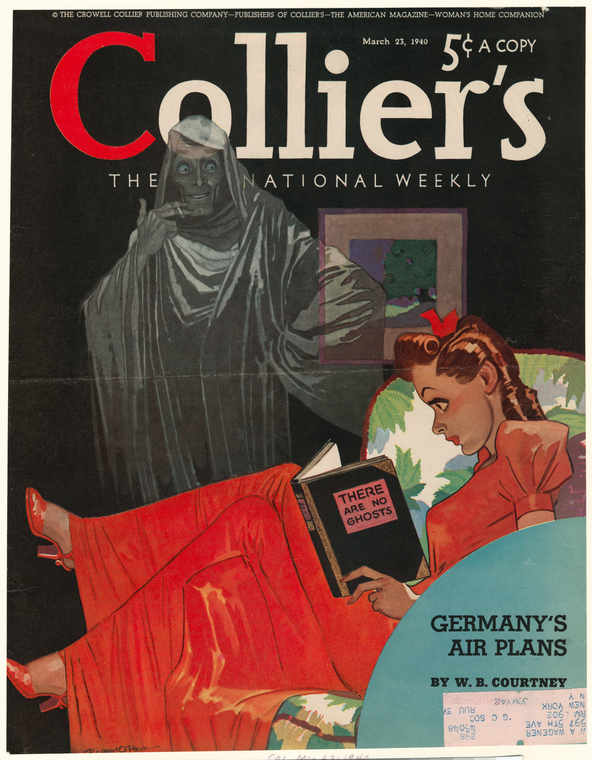Biblio File
Ghosts in the Library: Reading After Life

In Mary Roach’s book Spook: Science Tackles the Afterlife, she discusses several séance experiments in the early 1900s that were well-documented. Notably, she visits the Cambridge Manuscripts Reading Room where she places a request for an archived item, “SPR 197.1.6: Alleged Ectoplasm” and receives it (p. 124). This book is full of funny and bizarre scenes of ghostly encounters and modern attempts to record or monitor them.
Cranioklepty: Grave Robbing and the Search for Genius by Colin Dickey
In 18th century Austria, classical music was the cultural touchstone of the country. When Joseph Hayden died he could not be given a proper burial since the country was in the midst of the Napoleonic wars. His skull went missing before the king could give him a funeral suitable for someone of his stature. Dickey goes on to tell the stories of other historical figures and their brushes with phrenology, including Mark Twain who met with a phrenologist while wearing a disguise and was told he was too cautious to ever amount to anything and then returned as himself and was told otherwise. It’s also “filled with bizarre missteps, like grave robbers not realizing how incredibly foul-smelling a week-old head would be, or researchers making preservation mistakes and ending up with skulls sprouting algae.” Though not about ghosts per se, Cranioklepty explores the “after life” of the skulls and bones of historical figures.
 The Third Man Factor: Surviving the Impossible by John Geiger
The Third Man Factor: Surviving the Impossible by John Geiger
Geiger writes about the elusive “third man factor” wherein explorers of the Arctic and in other extreme situations, a man trapped in the South Tower on 9/11 and an astronaut on Mir, have the uncanny feeling of a “third man” who guides them to safety and aids their decision making process. The “third man” reference is from T.S. Eliot’s “The Waste Land” where he writes about “the third who walks always beside you.”
For fans of the TV show Medium, now reportedly airing its final season, you may be interested to know that Patricia Arquette’s character is based on a real person, Allison Dubois, who wrote Don’t Kiss Them Goodbye, We Are Their Heaven: Why The Dead Never Leave Us and Secrets of the Monarch: What the Dead Can Teach Us About Living a Better Life. Interestingly, Allison is considered both a medium and a psychic.
Catalogers have developed ways to refer to a work that is written by a medium but is considered the work of a spirit. For example, Across the Universe with John Lennon by Linda Keen who claims that Lennon was the true author and that she merely transcribed their conversation. Both names are included in the catalog record so that the cataloger is not editorializing about the work’s authorship.

More recently, the novels in M.J. Rose’s (http://www.mjrose.com) The Reincarnationist series have inspired the short-lived Fox series Past Life.
All three of these shows have been cancelled, but will live on through media tie-in books and DVDs available at the library. Also, there’s still the TV show Bones, based on the novels of real-life forensic anthropologist Kathy Reichs. Her newest book, Virals is her first foray into writing for young adults.
For more ghostly reads, check out the book list Paranormal Activity @ Your Library by Alexandra Gomez.
Read E-Books with SimplyE
 With your library card, it's easier than ever to choose from more than 300,000 e-books on SimplyE, The New York Public Library's free e-reader app. Gain access to digital resources for all ages, including e-books, audiobooks, databases, and more.
With your library card, it's easier than ever to choose from more than 300,000 e-books on SimplyE, The New York Public Library's free e-reader app. Gain access to digital resources for all ages, including e-books, audiobooks, databases, and more.
If you don’t have an NYPL library card, New York State residents can apply for a digital card online or through SimplyE (available on the App Store or Google Play).
Need more help? Read our guide to using SimplyE.
Comments
update
Submitted by Anonymous (not verified) on January 19, 2011 - 11:03am